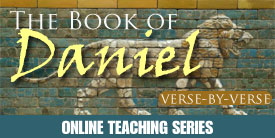It’s one of the deepest questions that a follower of Jesus can face: How can the God who commands love and mercy in Jesus also be the God who seemingly commands war, killing, and no mercy in the Old Testament?
This is a fair and pressing question. Many of us have read the Hebrew Scriptures and felt an undeniable tension. On the surface, these ancient texts present a stark contrast: a compassionate, nonviolent God revealed in Jesus juxtaposed against a portrayal of God in the Old Testament who commands homicidal violence, conquest and vengeance against Israel’s enemies.
PODCAST: Reading the Old Testament in Light of Christ
If God is truly unchanging, why does He seem so different in these passages?
For many, this disconnect becomes a barrier that keeps them from fully understanding, trusting, or even believing in God. A literal reading of these violent passages can make the Old Testament feel not only distant but even alienating, casting shadows of doubt over the goodness of God.
However, if we truly believe the radical claim of the New Testament that God looks like Jesus, then we must look deeper into these troubling texts. Reconciling these difficult scriptures with the heart and character of Christ is not optional for those seeking spiritual maturity. It is an essential part of the Christian journey. (Personally, this has been a profound quest of mine for nearly a decade, and I continue to learn something new every day.)
Yet the questions remains: How do we reconcile the God revealed by Jesus, who calls us to love our enemies, with the God depicted in the Old Testament, who reportedly commands His people to “utterly destroy” their enemies? And how do we make sense of commands that extend this violence to infants, the elderly, and even animals?
Wrestling with Troubling Texts
The Old Testament contains passages that, when read literally, seem to be at odds with the life and teachings of Jesus. For example, in Deuteronomy 20:16-18, God appears to command Israel to wipe out entire populations, leaving nothing alive:
“But of the cities of these peoples which the Lord your God gives you as an inheritance, you shall let nothing that breathes remain alive, but you shall utterly destroy them: the Hittite and the Amorite and the Canaanite and the Perizzite and the Hivite and the Jebusite, just as the Lord your God has commanded you, lest they teach you to do according to all their abominations which they have done for their gods, and you sin against the Lord your God.” (Deuteronomy 20:16-18)
And yet, just prior to these conquests, God delivers the Ten Commandments, which include the clear instruction, “You shall not kill.” How do we reconcile these apparent contradictions?
In Exodus 32, we see Moses shattering the stone tablets inscribed with the very commandments of God and then ordering the Levites to kill their “brothers,” “friends,” and “neighbors” in response to the golden calf rebellion. It’s a story filled with violence that seems completely at odds with the God Jesus reveals.
When we are honest, we can admit these conflicting portrayals of God’s involvement in commanding His people to commit homicidal violence against infants and the elderly serve to unsettle our own moral intuitions. We are right to ask questions about these topics because they deserve an answer.
Jesus’ Radical Revelation of God’s Nature
And then we come to Jesus.
In His Sermon on the Mount, Jesus directly rejects “eye for an eye” justice, instead calling us to forgive, to turn the other cheek, to love our enemies. Jesus reveals a God who heals, forgives, and embraces all, even those who would seek to harm Him.
In the New Testament, Jesus offers a radically different vision of God’s character. In His Sermon on the Mount, He directly rejects “eye for an eye” vengeance and instead calls His followers to forgiveness, enemy love, to turn the other cheek, and mercy. Jesus heals the sick, forgives the sinner, and even prays for those who crucify Him: “Father, forgive them, for they know not what they do.” (Luke 23:34).
It’s a radical contrast that demands an answer.
And for those seeking to follow Jesus, this contrast should raise profound questions.
If God’s character is fully revealed in Christ, why do we encounter these troubling Old Testament depictions of a God that does not fully resemble Jesus?
Ultimately, how can we fully trust a God who, at times, seems so different from the One Jesus reveals?
Could it be that we’re missing something?
Could it be that our reading of these ancient texts needs a more Christ-centered perspective?
Viewing the Old Testament Through the Lens of Jesus
What if Jesus is the key that unlocks the true nature of God?
The New Testament boldly proclaims that Jesus is the “image of the invisible God” (Colossians 1:15) and “the exact representation of His being” (Hebrews 1:3). Through Him, we are invited to reinterpret the Old Testament, not as an endorsement of violence, but as a reflection of humanity’s limited understanding of God.
When we look at the Old Testament through the lens of Jesus, we begin to see a fuller, clearer picture of God’s character.
If Jesus is the “image of the invisible God” (Colossians 1:15), then His life and teachings reveal the heart of God: a heart that heals, restores, resurrects, and reconciles rather than killing, stealing, and destroying.
Through His life, example, and teachings, Jesus offers us a new way of seeing the world. He calls us to interpret the ancient stories of violence and judgment, not as endorsements of brutality, but as reflections of humanity’s limited understanding of God at that time. Some of these Old Testament passages may be best viewed as allegorical, symbolic narratives that depict the struggles of humanity, the consequences of sin, and the need for God’s redemptive power. Regardless of their genre, the Hebrew scriptures point forward to Christ, who is the answer to our deepest questions about God.
The Old Testament reveals a progressive journey. It demonstrates a gradual unfolding of man’s understanding of God’s heart through the prophets, who begins to call men back to a God who desires mercy over sacrifice and peace over violence (Hosea 6:6, Micah 4:3). Jesus embodies this heart fully, inviting us to see God as a loving Father, rather than a vengeful warrior intent on exacting his pound of flesh through homicidal violence against any and all perceived enemies.
Jesus calls us to a more complete vision of God. It is a vision centered on Jesus, who offers reconciliation, love, peace, justice and mercy.
As followers of Christ, we dare not venture into the Old Testament without Jesus.
Having received the light of truth, why would we read the Old Testament as if it were void of Christ?
After all, Jesus Himself confirmed that the Law and the Prophets point to Him. (Luke 24:27)
And here’s the good news: The person and character of Jesus fully reveal a God whose love has long been misunderstood but has always been greater than we realized.
How to See Christ in the Old Testament
The Old Testament points to Christ, foreshadowing His redemptive work and God’s ultimate plan for reconciliation.
Consider the story of Abraham and Isaac, for example. Abraham’s willingness to sacrifice his only son, Isaac, mirrors the Father’s love in giving His own Son to humanity. Yet, it also reveals that God desires mercy, not sacrifice, which beautifully foreshadows the grace fulfilled in Christ.
Or consider the story of Joseph: His jealous brothers threw him into a pit and then sold him as a slave to foreign traders. Despite the evil that his brothers intended, Joseph thrived in Egypt and rose to become second in command behind Pharaoh. Instead of using his immense state power to retalitate against his brothers when they later come to him begging for bread (and don’t recognize him), Joseph forgives his brothers and reconciles with them. Joseph’s story of forgiveness and reconciliation mirrors the forgiveness Jesus extends to us.
Or consider the Exodus: Israel’s journey from slavery to freedom reflects God’s desire to liberate humanity from sin’s bondage. The Exodus points to Christ as the ultimate liberator, freeing humanity from the bondage of sin.
The prophets also pointed to this deeper understanding of God. Isaiah and Micah spoke of a Messiah who would bring peace, not vengeance, calling us to “beat swords into plowshares.” (Micah 4:3).
When we view the Old Testament through a Christ-centered lens, we see a tapestry of broken humanity woven with messianic hope, all pointing toward God’s love revealed in Jesus.
Embracing the God Who Looks Like Jesus
So, what do we do with the violence of the Old Testament? We view it through the lens of Jesus.
Jesus reveals a God whose love has long been misunderstood but has always been greater than humanity realized. Jesus calls us to see the Old Testament not as a stumbling block but as a foundation pointing to Him. As followers of Christ, we dare not read these ancient texts without the light of His life and teachings.
The Old Testament is not a collection of contradictions. Instead, it is the revelation of God’s heart that finds its fulfillment in Jesus. When we let Jesus shape our understanding of God, we see the Scriptures for what they truly are: a story of reconciliation, mercy, and love.
A Final Word
The God revealed in Jesus is not divided or inconsistent. He is the same yesterday, today, and forever. (Hebrews 13:8) But humanity’s understanding of God has evolved over time, reaching its climax in Christ. Jesus is the definitive Word of God, and through Him, we are invited to see the Scriptures, and God Himself, in a new light.
I encourage you to wrestle with these texts, not in fear or doubt, but in faith, trusting that the God revealed in Jesus is good, merciful, and loving. As we allow His light to illuminate the Scriptures, we will find a God who is not only trustworthy but worthy of our deepest love and devotion.
And that is the foundation upon which we can build our faith.



